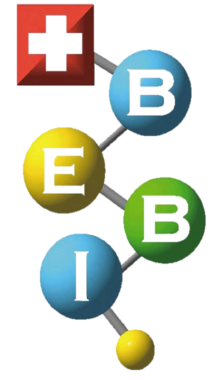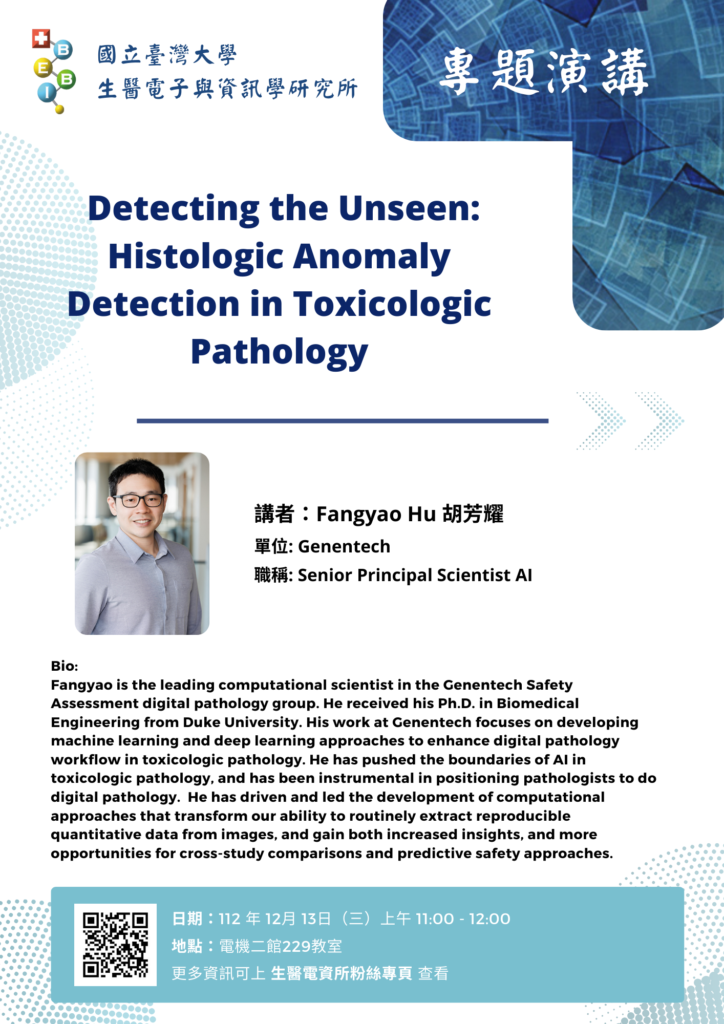◆演講公告◆
|時間:112年12月13日(三)上午11:00-12:00
|地點:電機二館229教室
|講者:Fangyao Hu 胡芳耀, Genentech, Senior Principal Scientist AI
|主題:Detecting the Unseen:Histologic Anomaly Detection in Toxicologic Pathology
|摘要:The field of toxicologic pathology is poised to leverage the advancements in artificial intelligence (AI), specifically Deep Learning (DL), to transform pathology practice within the discipline. AI/DL enabled computer assisted diagnosis is emerging as a significant advancement in medical practices such as Medical Imaging, while in the field of pathology, similar approaches are being extensively researched and explored. However current real-world applications of these methods in pathology are more nascent, in part due to the complexity of the image data of whole slide images (WSI) as compared to radiographic images. Our team has taken a multipronged approach to develop DL algorithms that can highlight and, in some instances, classify abnormal tissue regions within standard toxicologic pathology WSI in rats. We have used anomaly detection approaches to identify areas of tissue with a high probability of being not-normal, and weakly-supervised multiple instance learning approaches to identify and classify lesions. These methods hold long-term promise to enable tissue-triage strategies to sort slides with abnormalities from those without, and have immediate applications into current workflows to suggest regions with high probability of abnormal findings for pathologists’ attention. Here we provide an overview of our computational approaches and select examples of their promise for near and long term implementation into toxicologic pathology workflows.
|講者介紹:Fangyao is the leading computational scientist in the Genentech Safety Assessment digital pathology group. He received his Ph.D. in Biomedical Engineering from Duke University. His work at Genentech focuses on developing machine learning and deep learning approaches to enhance digital pathology workflow in toxicologic pathology. He has pushed the boundaries of AI in toxicologic pathology, and has been instrumental in positioning pathologists to do digital pathology. He has driven and led the development of computational approaches that transform our ability to routinely extract reproducible quantitative data from images, and gain both increased insights, and more opportunities for cross-study comparisons and predictive safety approaches.

